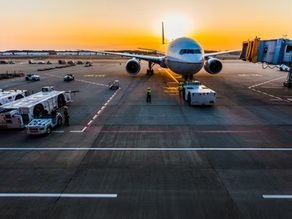How the Pandemic has Affected the Tourism-Dependent Sector of the Economy

As the ongoing Covid-19 pandemic continues to march on, more and more nations and their governing bodies are beginning to realize that adapting to the new normal, assembling and instituting essential pubic health measures, and most importantly, reopening the economy to whatever extent possible, is the way to deal with this dire situation until there is an end in sight. Countries have been asking their citizens and residents to go into total lockdowns since late-February to early-March, and it has barely been a month or two since the total shutdown of every necessary (and non-essential) supply chain have been gradually lifted. While it is extremely important to ”flatten the curve”, a phrase that has become a part of our lives, designed to ease the burden on our hospitals and healthcare services, an even more pressing need is to ensure that the population is able to sustain its livelihood. An overwhelming majority of us depend on a steady flow of income to survive, and yes, while not everyone lives paycheck to paycheck, perhaps only the top of the human pyramid have large savings to fall back on. Smaller Businesses are relieved to be opening after months of inactivity There is no end to the list of sectors of the economy that have taken a hit owing to the complete halt the world was brought to. Some federal governments realized before others that someone needs to get things going sooner rather than later, as the impact of the pandemic extends beyond the current number of Covid-19 deaths. One of the earliest steps taken by governments, when it was clear at the start of 2020 that this situation was evolving into a large-scale global issue, was to impose bans and restrictions on international travel. Initially, it was limited to the worst-hit areas, but as the virus has continued to surge through larger fractions of the population, perhaps the most reasonable decision was to impose curfews and strict lockdowns to limit the spread, while countries expanded their existing healthcare infrastructure to cope better with the anticipated drastic increase in patients. You cannot fault them for erring on the side of caution, as we did not know much about Covid-19 at the very beginning, we knew nothing about its infectiousness or its death rate, two very important parameters in determining the seriousness of a viral vector. So what we had then was a colossal decrease in both the willingness to travel and indulge in tourism, even domestic for that matter, let alone international, we also had mandatory lockdowns in place, which meant even the bravest of the brave couldn’t choose to go for a trek in the nearby mountains, or whatever their plans were for a good time outside. And let’s be honest, “virtual travel” and 3D tours from a screen, no matter how big, does not even come close to the real deal. The damage inflicted to travel is not limited to aviation, something to be remembered. The cruise ship industry, which by definition is heavily influenced by tourism, has seen its major cruise lines(companies) suffer as much as a 70% loss in share prices. The onset of Covid-19 meant that cruise lines had to cancel sailings and bookings on a scale never seen before. Learn more about the adverse impact of the pandemic on cruise ships as a whole. Travel restrictions also massively plagued the aviation industry, once again partly due to the aversion of people from tourism as an activity. Numerous flights have been canceled, they’ve been flying with lots of empty seats, resulting in a shocking number of layoffs and declarations of bankruptcy, in what has been commonly referred to as the worst crisis in the history of aviation. Cargo prices also skyrocketed to almost triple the average rate by late March. Empty Flights are now commonplace To give you a rough idea of the extent to which travel and tourism had been hampered by the restrictions(to be fair, these restrictions were expected, and required) put in place, for all worldwide travel destinations, the figures were as follows(as of April 2020): 97 destinations (45%) closed their borders for tourists either entirely, or selectively. 65 destinations (30%) suspended international flights either entirely, or selectively. 39 destinations (18%) implemented border closure by banning passenger entry from specific origin countries. The World Travel and Tourism Council has estimated a global loss of around 75 million jobs and $2.1 Trillion in revenue. If we were to rank the various major sectors of the economy, travel and tourism are among the most affected. In addition to the roadblock put in place for different means of travel, hotels are also beginning to see tremendous losses. Larger, upscale hotels, which were the sites of frequent conventions, seminars, and meetings, have taken the biggest blow, with an approximate 15% drop in revenue per available room, while the cheaper, budget hotels have taken a hit of 8% on the same metric, although these economy-class hotels are not as likely to handle any sort of disruption to their income very well. The estimates and projections so far point to a significant decrease of 25% or above even for the first quarter of 2020, including the first 2 months of relatively normal, uninterrupted business. Projections for the rest of the year are as bleak as ever too. Experts say this would by far be the worst figures that international tourism has seen since 1950 and would be an anti-climactic end to the sure but steady growth that the industry has seen from 2009. Statements by the UNWTO Panel of Experts point to the gradual recovery of international demand in 2021. Domestic demand is expected to recover faster than international demand. The Organisation for Economic Co-operation and Development(OECD), an association of 37 nations promoting economic growth and world trade, have revised their data projections to point towards a bleak-looking 60% decline in international tourism in 2020, with potential to
Airport Procedures For Travel From India To UAE During The Covid-19 Pandemic

Normally a visit to another country involves that small sense of excitement in anticipation of what is to come. However, during these tough times, traveling during the Covid-19 pandemic is an experience that needs to be tackled with the utmost caution, adhering to all possible safety measures to avoid contracting the virus. Airports are, after all, a hotbed for huge gatherings, compounded by the fact that passengers might even be in transit to a third destination. There is a lot of confusing, and often contradictory, information out there regarding the procedures to be followed as well as the availability of flight tickets, things to be done, and even the list of nationalities permitted to enter certain countries. This blog details my journey from Chennai, India to Dubai, UAE, on the 19th of August, 2020. Pre-travel to-do List The very first thing that you need to ensure is the availability of flights to your destination. A large number of private carriers have temporarily halted their services to and from a list of destinations, especially in those countries that have been hit badly by the pandemic and see a large number of fresh cases to this day. There were only a couple of carriers available from Chennai to the UAE. Initially, I’d booked an Air Arabia flight to Sharjah, but that got canceled within the next couple of days. I ended up booking an Air India Express flight to Dubai instead, which was part of the Vande Bharat Phase V scheduled list of flights. Even before that, however, make sure the type of passport and visa(and procedures for the same) are in the permitted list, as in these turbulent times a lot of restrictions are in place. In fact, Indian passengers seeking to travel to the UAE on Visit Visas were not permitted until 15th August, and the Vande Bharat scheme was specifically for UAE Residence Visa holders. Visa On Arrival facility still remains disabled to date, so ensure that you get a Visa arranged for via a travel agent either in the country of your residence, or a reliable source in the UAE, which I personally recommend for a hassle-free process. Check with your country’s embassy in the UAE on social media, or look for a clear, explicit news article that states that your particular passport and visa combination is eligible to travel, before booking tickets and making arrangements. You need to get a Covid-19 test done no more than 96 hours before the departure of your flight according to UAE regulations. This test has to be done from one of the government-accredited testing centers of your country of departure, or from the list of PureHealth screening facilities(curated by the UAE). Produce this negative test result on arrival in Dubai. It is also recommended that Visit Visa holders procure a Medical Insurance for Covid-19, lasting the duration of your stay at the UAE, for an additional charge of around AED 200. Indian Immigration officials actually asked me to produce this Medical Insurance, so be sure to purchase one to avoid any problems before your flight. I would advice taking printouts of all relevant travel documents that you may be asked to produce at your departure port, just so that you can prevent your phone from being passed around. Every single touch or contact is undesirable at this point! Purchase a few masks, a bottle of sanitizer, and if you want to err on the side of caution, a hazmat suit. Descriptions of N-95 masks being hard to breathe in are wildly exaggerated in my opinion. I used one for the entirety of my journey, right until I reached home, and faced no problems whatsoever breathing, at any single point of time. Face shields are provided before the flight takes off(we’ll get to that in a bit). I did not carry gloves with me, as according to a relative who works in the medical field, most people do not know the right way to take off their gloves and end up defeating the whole purpose behind wearing them in the first place. Airport Procedures Social distancing wasn’t really being actively enforced at the Chennai airport. There was a distinct lack of crowd in the airport though, which should help you do your part. Before you even enter the airport to check-in your baggage, a small form is provided, where you fill in basic contact information and your address in Chennai(carry your own pen for this). The line was slow-moving though, and the officer was perfectly fine with taking his own sweet time while checking the details and permitting passengers to proceed onward. Not to mention the fact that he couldn’t be bothered to pull his mask above his nose, thereby, once again, defeating the whole purpose behind wearing protective gear. You are asked to display the front page of your passport shortly afterward, to a contactless desk, before you make your way to check-in your baggage. Immediately, I noticed that the airport was infinitely less crowded and quieter, perhaps owing to all the shops being closed. The procedure here does take a little bit longer than usual, but they have a transparent barricade in place between yourself and the check-in officer who issues your boarding pass. The officer here was careful in checking and ensuring that you have all the relevant, aforementioned documents on your person, including your Medical Insurance before she issued my boarding card. Near Baggage Check-In, Chennai International Airport I made my way to the Immigration counter, where lines were non-existent and the counters, empty. Once again, the Immigration officer was more inquisitive than usual, but all that being done, it was business as usual. Security Checks were smooth and decently quick, owing once again to the lack of the usual airport traffic. I frequently used the hand-sanitizer after touching a foreign object, and I recommend that you do the

